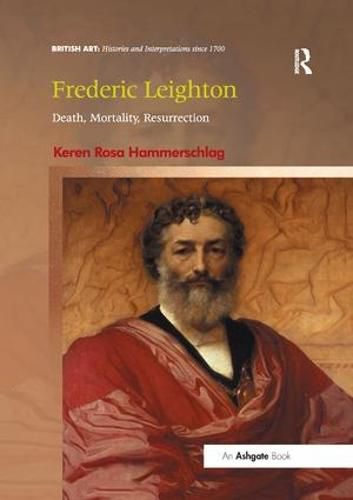Readings Newsletter
Become a Readings Member to make your shopping experience even easier.
Sign in or sign up for free!
You’re not far away from qualifying for FREE standard shipping within Australia
You’ve qualified for FREE standard shipping within Australia
The cart is loading…






Keren Rosa Hammerschlag’s Frederic Leighton: Death, Mortality, Resurrection offers a timely reexamination of the art of the late Victorian period’s most institutionally powerful artist, Frederic Lord Leighton (1830-1896).
As President of the Royal Academy from 1878 to 1896, Leighton was committed to the pursuit of beauty in art through the depiction of classical subjects, executed according to an academic working-method. But as this book reveals, Leighton’s art and discourse were beset by the realisation that academic art would likely die with him. Rather than achieving classical perfection, Hammerschlag argues, Leighton’s figures hover in transitional states between realism and idealism, flesh and marble, life and death, as gothic distortions of the classical ideal.
The author undertakes close readings of key paintings, sculptures, frescos and drawings in Leighton’s oeuvre, and situates them in the context of contemporaneous debates about death and resurrection in theology, archaeology and medicine. The outcome is a pleasurably macabre counter-biography that reconfigures what it meant to be not just a late-Victorian neoclassicist and royal academician, but President of the Victorian Royal Academy.
$9.00 standard shipping within Australia
FREE standard shipping within Australia for orders over $100.00
Express & International shipping calculated at checkout
Keren Rosa Hammerschlag’s Frederic Leighton: Death, Mortality, Resurrection offers a timely reexamination of the art of the late Victorian period’s most institutionally powerful artist, Frederic Lord Leighton (1830-1896).
As President of the Royal Academy from 1878 to 1896, Leighton was committed to the pursuit of beauty in art through the depiction of classical subjects, executed according to an academic working-method. But as this book reveals, Leighton’s art and discourse were beset by the realisation that academic art would likely die with him. Rather than achieving classical perfection, Hammerschlag argues, Leighton’s figures hover in transitional states between realism and idealism, flesh and marble, life and death, as gothic distortions of the classical ideal.
The author undertakes close readings of key paintings, sculptures, frescos and drawings in Leighton’s oeuvre, and situates them in the context of contemporaneous debates about death and resurrection in theology, archaeology and medicine. The outcome is a pleasurably macabre counter-biography that reconfigures what it meant to be not just a late-Victorian neoclassicist and royal academician, but President of the Victorian Royal Academy.